Understanding the Challenges of Beam Pockets Abandoned in Historic Brick Walls
In the upcoming year, we’re going to write an article about “ghost buildings” which isn’t about ghosts at all actually. It is will be about buildings that are already gone and demolished, yet the shadow of the old buildings is left on remaining historic buildings.
This interesting historical architectural occurrence is actually common here in Washington DC where other neighboring historic buildings have already been demolished. Those old buildings, leave an imprint on the remaining adjacent buildings. The building shown in the picture below is a perfect example of this. They removed and demolished the building which was either taller or at the same height as this building and therefore you cannot see an imprint of the removed demolished roof line. You can, however, see the old abandoned remaining beam pockets from the other old building which has now been demolished or destroyed.
Like many similar cases, in this particular circumstance, the old building wasn’t destroyed to make way for modern progress or the construction of a new building, instead it was likely destroyed because it hadn’t been properly maintained and preserved. Without proper upkeep and maintenance, like tuckpointing or repointing, old masonry buildings will deteriorate to the point they will eventually fail and collapse.
You can see across the gable side facade of this remaining building, the old beam pockets are left behind like a field of battle scars. Like so many other cases, that we show here on our website, the demolished building could have been preserved and simply maintained through typical masonry restoration processes and repointing.
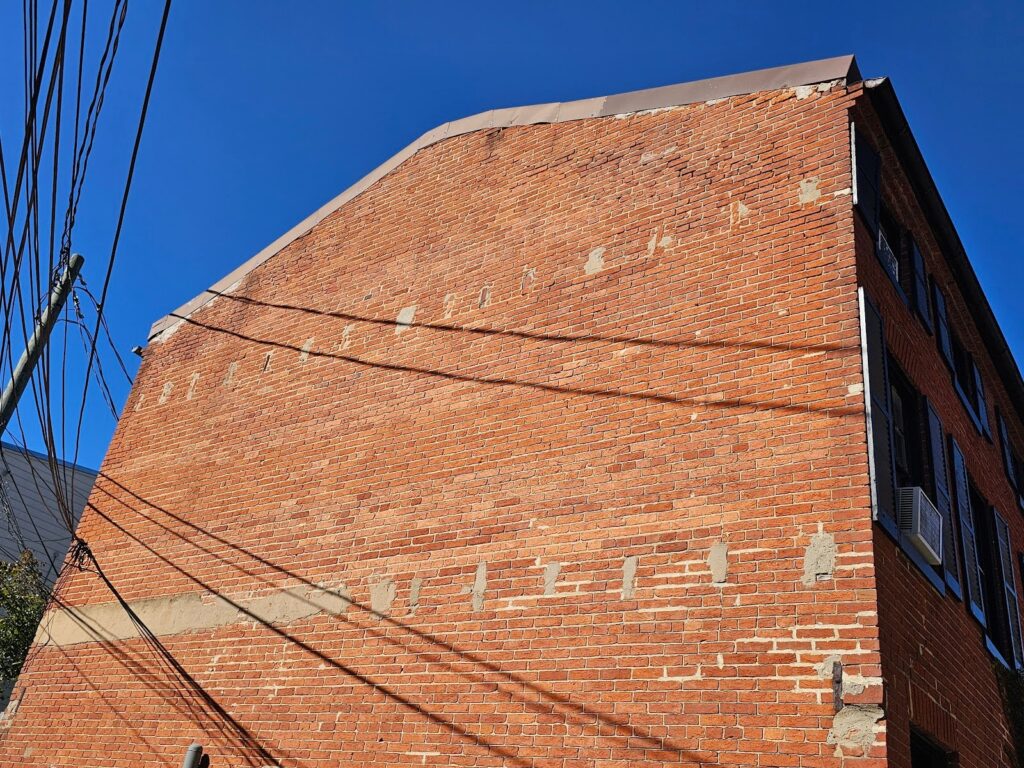
The building shown in the pictures above and throughout the majority of today’s article has beam pockets which have already been filled, but the next picture below shows an example of another nearby similar case. The adjacent building has already been demolished or destroyed and removed, but the previously shared side wall with the old abandoned beam pockets remains. Here though, unlike the other examples, those beam pockets remain wide open.
In general, it helps the remaining building, if those beam pockets are filled because in most cases, the upper levels of building are built with only a double wythe brick wall. That means that the 3.5 inch recess, when used for a beam pocket, to accommodate a joist tail, comes at least halfway through the (now) exterior partition of the building.
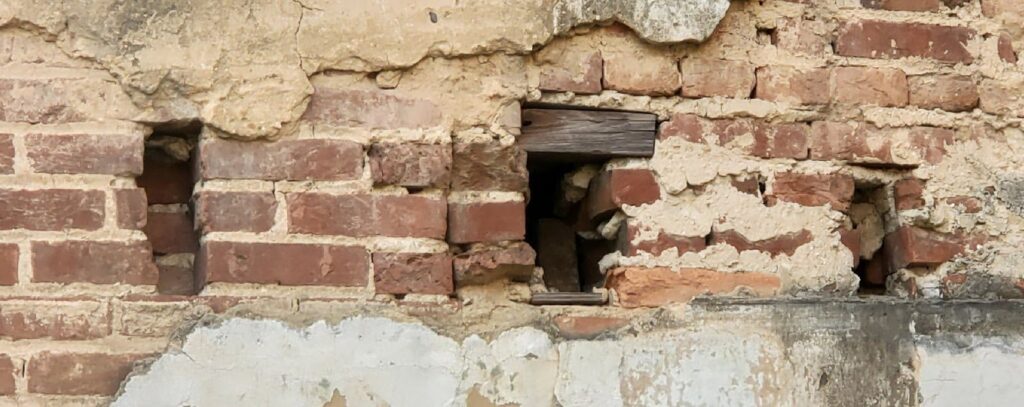
The amount of remaining wall, without the joist filling the remaining adjacent void, isn’t enough to do a good job to keep out water and moisture or the elements of weather from the outside. This all matters much more here in our climate where we have significant issues related to consistent freeze thaw cycles in the winter.
Beam pockets, like this, are a thing of the past. Modern contemporary construction uses systems that are based on fire stopping and fire blocking similar to California platform framing where each level is basically independently isolated. This historic type of floor framing allows the joist of each level to bare onto the brick demising wall, generally at the sides of the building.
The picture below shoes another example where the old beam pockets have been filled with new bricks or a combination of masonry and mortar.
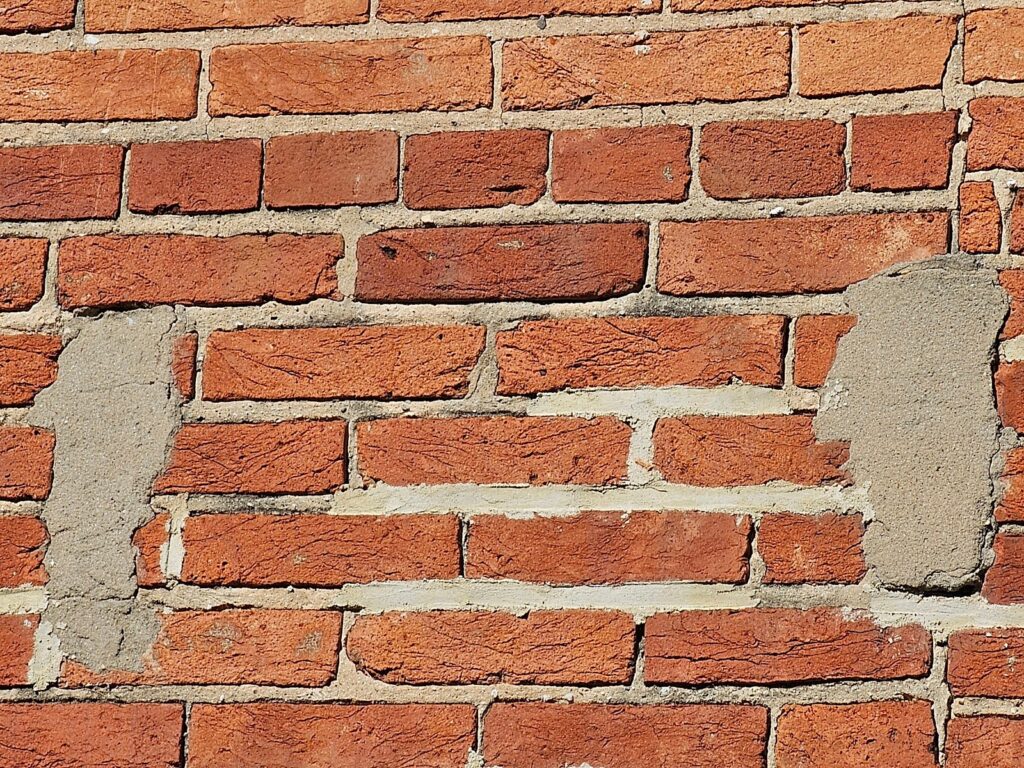
A closer view follows. Although this wall was never intended to be an exposed exterior partition or facade, the masonry needs to be now repinrted so that it can better withstand the exterior elements. If you look very closely, you can see, some limited repointing has already been done, but just in specific spots.
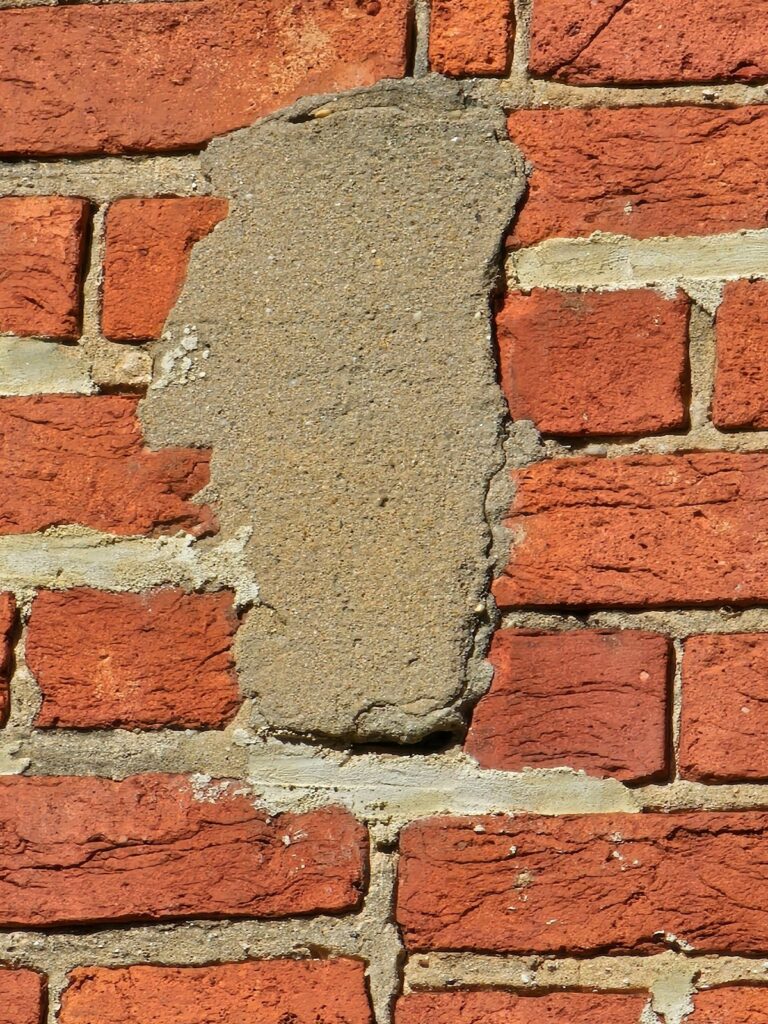
The next picture below shows a former beam pocket that has been filled with a vertical brick in the soldier facing position.
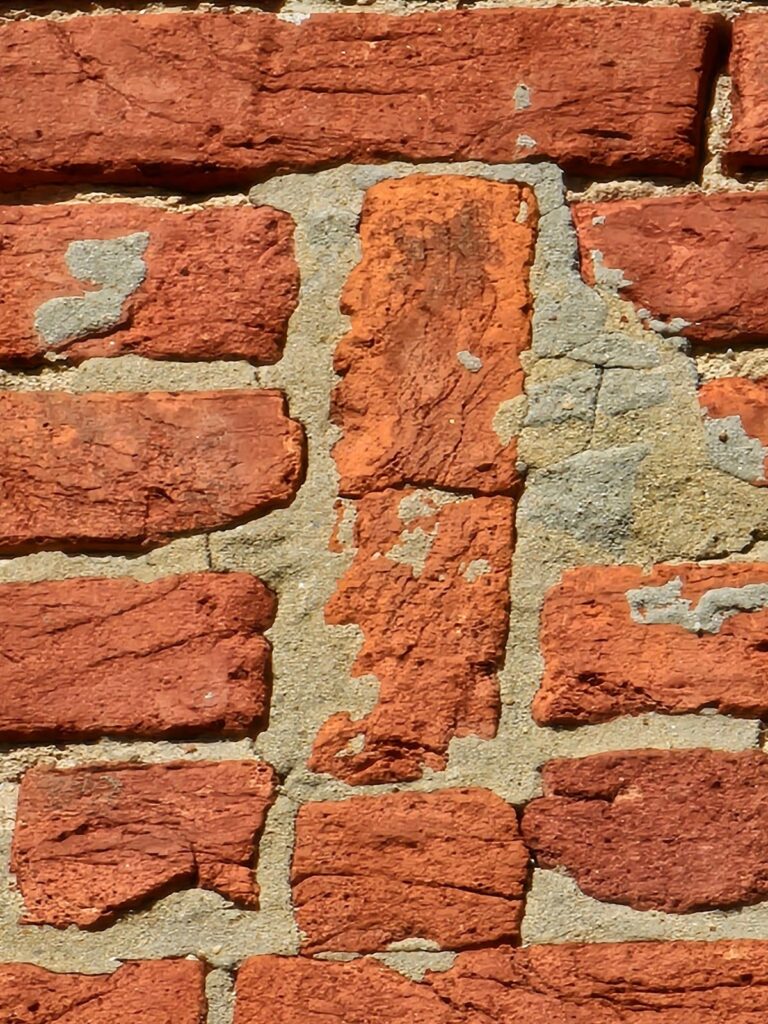
Even though the specific spot of repair shown above seems to be relatively well hidden, because it almost visually blends in, if you look back at the wall from a further distance, you can see all of these different areas of repair. They don’t all jump right out at you, but they are visually discernible.
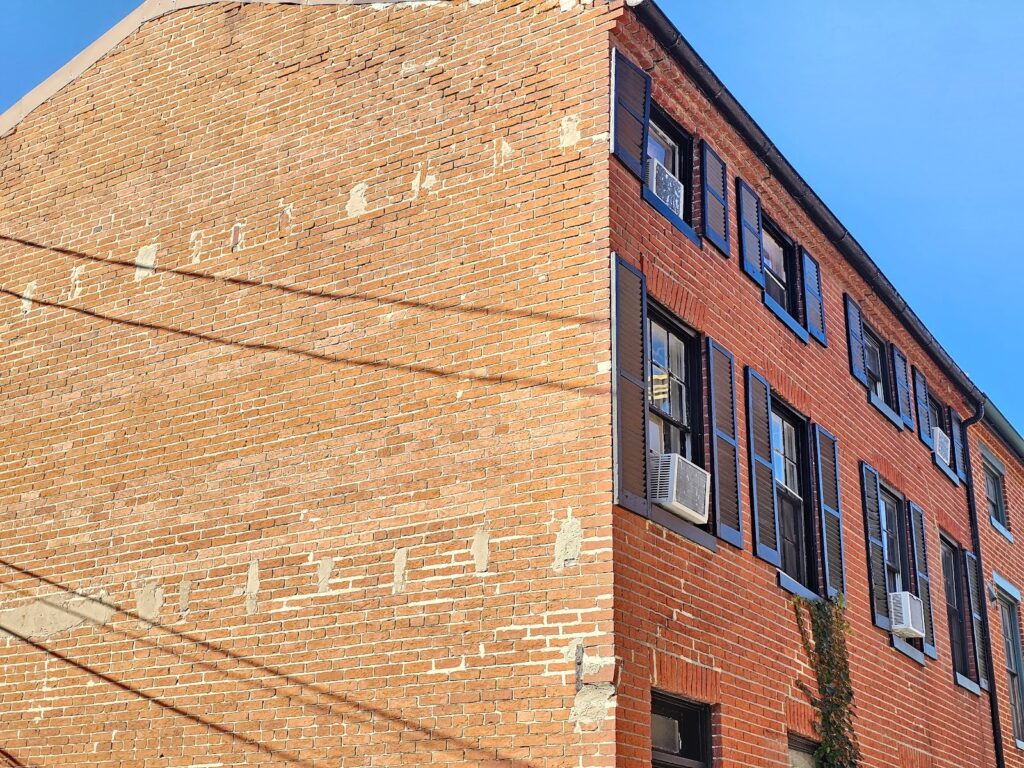
Our company, Dupont Tuckpointing and Masonry, specializes in masonry restoration, historic brick repointing, and tuckpointing services in the Washington D.C. area. These buildings are uniquely historic, and their preservation requires skilled masons who are technically trained in the best practices and knowledge of proper restoration techniques.
We understand the significance of maintaining the architectural integrity of these historic structures, and our team of experienced professionals is dedicated to delivering exceptional craftsmanship. Whether you require masonry restoration, tuckpointing, or brick repointing services, we are here to help.
At Dupont Tuckpointing and Masonry, we take pride in our work and strive to ensure that every project is executed with the utmost care and attention to detail. We are committed to preserving the rich heritage of Washington D.C.’s built environment for generations to come.
If you have any questions or needs regarding masonry restoration, historic brick repointing, or tuckpointing services, please do not hesitate to reach out to us. We would be delighted to assist you and provide you with the expertise and quality workmanship that your historic property deserves.You can reach us by telephone at (202) 796-7644 and you can reach us by email from the contact form on our website at https://duponttuckpointingmasonrydc.com/contact-us/.




